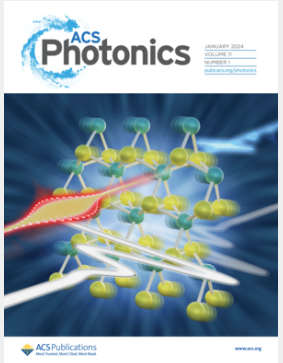Machine Learning Prediction Framework for Tailoring the Optical Response of Particulate Media
IF 6.5
1区 物理与天体物理
Q1 MATERIALS SCIENCE, MULTIDISCIPLINARY
引用次数: 0
Abstract
Accurate and efficient prediction of the reflectance of particulate media is crucial for advancing optical technologies. However, traditional reflectance prediction methods often struggle to balance precision with computational efficiency, limiting material design and optimization, especially for large-scale systems. Here, we developed a novel reflectance prediction framework based on the Monte Carlo method (MCM) using a machine learning (ML) strategy. This framework addresses the challenges of low computational accuracy at high particle concentrations and inefficiency in predicting high reflectance in conventional MCMs, achieving simultaneous improvements in both accuracy and efficiency. This realization comes from the mapping of the relationship between input optical features and output reflectance in MCMs by ML and the development of a new experimentally dependent scattering correction model based on this mapping. Rigorous experimental validation and numerical simulations demonstrate the framework’s accuracy, reliability, and versatility across a variety of particulate systems. Furthermore, we applied this framework to create a high-throughput optimization algorithm tailored for radiative cooling applications, effectively guiding the optimization of representative ZrO2/PDMS films and showcasing the framework’s practical potential. Overall, our approach significantly accelerates the optimization of particulate media, paving the way for the development of innovative materials with tailored optical properties.

裁剪颗粒介质光学响应的机器学习预测框架
准确有效地预测颗粒介质的反射率对于推进光学技术的发展至关重要。然而,传统的反射率预测方法往往难以平衡精度和计算效率,限制了材料的设计和优化,特别是对于大型系统。在这里,我们使用机器学习(ML)策略开发了一种基于蒙特卡罗方法(MCM)的新型反射率预测框架。该框架解决了在高颗粒浓度下计算精度低以及在预测传统mcm的高反射率时效率低下的挑战,同时实现了精度和效率的提高。这一实现来自于ML对mcm中输入光学特征和输出反射率之间关系的映射,以及基于该映射的新的实验依赖散射校正模型的开发。严格的实验验证和数值模拟证明了该框架在各种颗粒系统中的准确性、可靠性和通用性。此外,我们应用该框架创建了一个适合辐射冷却应用的高通量优化算法,有效地指导了具有代表性的ZrO2/PDMS薄膜的优化,并展示了该框架的实用潜力。总的来说,我们的方法显著加速了颗粒介质的优化,为开发具有定制光学特性的创新材料铺平了道路。
本文章由计算机程序翻译,如有差异,请以英文原文为准。
求助全文
约1分钟内获得全文
求助全文
来源期刊

ACS Photonics
NANOSCIENCE & NANOTECHNOLOGY-MATERIALS SCIENCE, MULTIDISCIPLINARY
CiteScore
11.90
自引率
5.70%
发文量
438
审稿时长
2.3 months
期刊介绍:
Published as soon as accepted and summarized in monthly issues, ACS Photonics will publish Research Articles, Letters, Perspectives, and Reviews, to encompass the full scope of published research in this field.
 求助内容:
求助内容: 应助结果提醒方式:
应助结果提醒方式:


